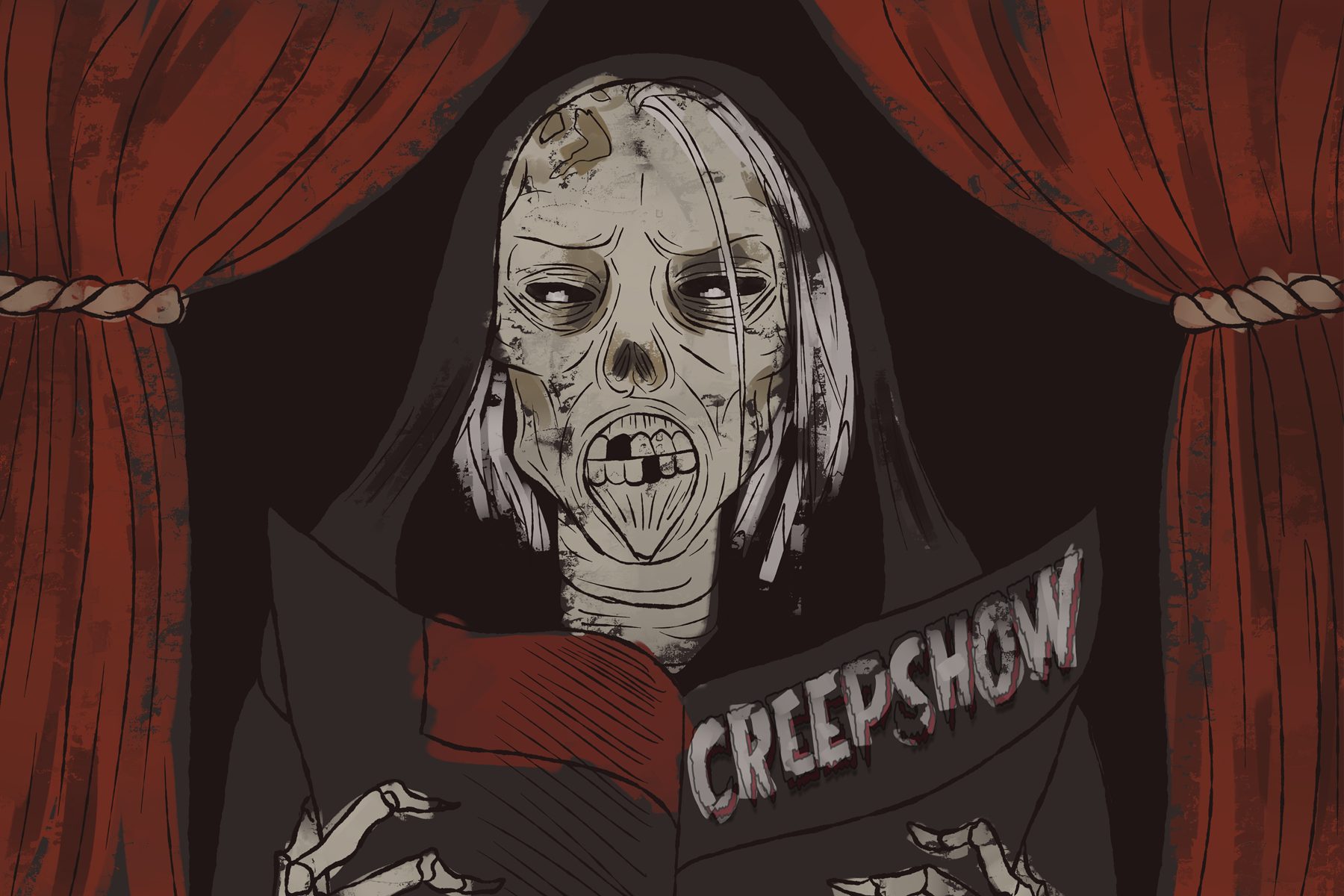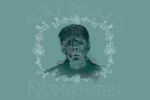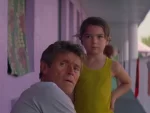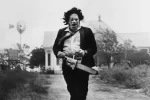“Creepshow” is a new series on Shudder, a horror-exclusive streaming platform with a large library of classics and originals. The series adapts short horror fiction and original scripts written for the show. Before the series could air its final episode, “Creepshow” was renewed for a second season, so it’s fair to say it has been a resounding success for Shudder. Before we look at the actual series, it’s essential to understand the “Creepshow” film that inspired the series.
The “Creepshow” movie series — two films and a direct-to-video movie that few are willing to speak about — has its origins in a long line of anthology films based on EC Comics’ popular 1950s horror lines. These comics were as popular as they were infamous. Jim Trombetta, author of “The Horror! The Horror! Comic Books the Government Didn’t Want You to Read,” summarized why the comics were so enticing and controversial: “In an era that held its values dearly, no dearly held value survived exposure to the horror comic universe: not the ‘happy ending,’ not family, not science, and not the law.”
Rather than adapting issues of the comics outright, the segments from the 1982 “Creepshow” were all original Stephen King stories inspired by the likes of “Vault of Horror,” “Tales from the Crypt,” “Haunt of Fear” and “Shock SuspenStories.” The segments in the film reflect the simple formula of the comics: If someone does something wrong, there must be grotesque consequences.
#Creepshow renewed for season 2 on AMC's Shudder https://t.co/ALYB7Yjlzr pic.twitter.com/lVb6xPmudC
— The Hollywood Reporter (@THR) October 30, 2019
Far from the first film to adapt horror comics, 1973’s “Tales from the Crypt” — not to be confused with the comic, television series or the television spin-off films — presented the comics’ stories with the seriousness and respect afforded to the most respected moral tales, especially the tragic “Wish You Were Here” and “Blind Alleys.” “Creepshow” changed the tone of the series by taking moral righteousness completely out of the picture. The trajectory of the 1982 film’s segments emphasize the hapless downfalls of the stupid, annoyed and self-satisfied people that populate them.
The original “Creepshow” also found a way to give new life to EC Comics’ potentially dated methods of storytelling. The Bavaesque garish lighting gives each story’s sting in the tail a palpable sense of pulpy gratification. The stylized framing effects change the ratio to match on-screen action and recreate the feel of receiving information through the slanted panels of a comic book. Portraying the segments’ beats as the panels of a comic, match cuts place the events of the story into the context of an actual comic book. Director George Romero used the language of cinema to make “Creepshow” feel more like a comic book than any film before.
King’s contributions to “Creepshow” retain the basics of the comics, but the characters have a dopey or self-seriousness about them that almost matches the ludicrousness of their fates. The approach works because King believes in the power of horror’s iconography and the simplicity of the comics’ narratives.
“Creepshow” is a defiant embrace of what had been deemed to be the nadir of popular culture. The 1973 “Tales from the Crypt” may have fully realized the dramatic potential of straightforward stories, but “Creepshow” was more interested in blowing raspberries at any preexisting notions of respectability. Speaking on George Romero and Stephen King’s collaboration in an issue of “Fangoria,” show-runner Greg Nicotero nailed down the compatibility between Romero and King: “So you’ve got the guy who bucked the system with ‘Night of the Living Dead’ and ‘Dawn of the Dead’, with a guy whose books bucked the system, and you partner them on a tribute to comic books that bucked the system.” Unfortunately, this quote also points out the hugest problem with “Creepshow”: its safeness.
The “Creepshow” series’ greatest failure is the complete absence of any irreverence. Instead, the show’s reverence for the past keeps it from realizing the possibilities of its format. The insistence on recapturing the vibe of the original “Creepshow” is frequently realized through poor recreations of the film’s outlandish stylistic devices and deceptively simple narrative structure. The nuances of the film’s many successes are made evidently clear in the way so many of the stories fall flat.
The “Creepshow” series sets itself apart from the original in the way it chooses to adapt old short stories and new scripts that reflect the spirit of the original film. The concept is strong in theory — there are thousands of excellent unadapted short stories in the horror genre — but the execution and selection are mostly dodgy. There’s a distinct feeling of seeing none of the stories go for broke. So many stories create such bland stakes and characters that it squanders any anticipation for an EC Comics-style denouement. In the latter episodes, I found myself just hoping for at least a bit of creative FX work.
The FX work is impressive across the board; the show-runner’s FX group, KNB EFX, gives the creatures of the segments an impressiveness that totally overshadows its other elements, especially when a good number of the segments look like amateurish student thesis films. A glut of ugly and awkward compositions are present throughout the series, and they detract from even the more polished shorts. The inspired comic book framing and match cuts are almost completely replaced by cheap editing tricks that would feel at home in a basic After Effects tutorial. The gel lighting of the 1982 “Creepshow” even pops up to complete the barrage of surface-level callbacks.
Although most of the references feel empty, some segments implement the original film’s stylized choices in effective ways; however, the brief effectiveness of these stylistic allusions can make other segments feel particularly haphazard. The comic book art tying “Night of the Paw” together is the most impressive aspect of the episode, and the lurid colors of “The Man in the Suitcase” feel like a natural extension of the decor of its stoner protagonist’s messy apartment.
The series makes the odd choice to shift perspective and focus away from the character who will inevitable receive a gruesome karmic twist. As a result, the characterizations can feel oddly muted; the crimes and wicked behaviors of the villains often come across as thin excuses for gore. I call it a “choice,” but the shift comes across as more of a misunderstanding than anything deliberate. EC Comics’ storytelling might be moralistic, but the “Creepshow” film got around the potential righteousness of the respectable approach by having the immorality feel as fun as the comeuppance. The original “Creepshow” and the “Tales from the Crypt” television series both achieved this by heightening everyday nastiness to absurd, yet recognizable caricatures.
Happy Halloween! Enjoy an exclusive image gallery of @Shudder's @CreepshowTv comic book art and my chat with the master himself, Greg Nicotero: https://t.co/V2enuVstaw pic.twitter.com/SKoyd7oph8
— VVO)))LFMAN (@TheWolfman) October 31, 2019
Ignoring the unsatisfying ending, the episode “House of the Head” from “Creepshow” is an admirable crack at getting away from the typical EC Comics trajectory. It avoids the production’s limitations by largely confining the action to the miniatures of a doll house, and the narrative expresses the feeling of facing an incommunicable horror as a child. It subverts genre tropes in a way that feels wholly organic to the story and its themes when received wisdom about people who can help in times of crisis is undermined by the unknowable horrors faced in the story.
If you removed the slight instances of gore, “House of the Head” could be an intense episode of “Goosebumps,” which is a good thing. The narrative of “House of the Head” is allowed to be its own entity, and so many of the stories feel like they have either been desperately molded or conceived to fit inside an idea of what constitutes a “Creepshow” segment. The segment’s freedom to be distinct allows its ideas to flourish and complement the series’ aims in nuanced and effective ways.
“The Man in the Suitcase” and “The Finger” are also moderately successful in the way they fulfill the basics of a “Creepshow” segment in unconventional ways. “The Man in the Suitcase” initially positions the lead character as the inevitable subject of punishment, but his failure to act is contrasted with the assuredness with which his peers commit evil. The story’s the hyper-specific aspects of its supernatural situation are both funny and suggestive of larger horrific implications.
SURPRISE! Treat yourself to the @CreepshowTv season finale a night early.
Happy #Halloween Eve everyone 🎃
🎥: https://t.co/3QsYuNDEOC pic.twitter.com/BJWxI7D4Ss— Shudder (@Shudder) October 31, 2019
“The Finger” expresses the moral and mental decay of its character through an oddly cute murder creature. The ostensible lack of control plays with the idea that the series will shift the focus away from the next victim of karma, even the protagonist’s just desserts don’t immediately come into focus until the story allows us to have room from our tight alliance with his perspective.
The series ultimately suffers from a misguided and hopelessly dedication to the original “Creepshow.” Watching the series feels like listening to a band’s new reunion album after a long hiatus: an inspired idea may sneak through, but it mostly just feels like they’re not sure how to recreate what made the music special in the first place. The rebellious nature of the original described by Nicotero does not feel as visceral or apparent in this new incarnation as it did in the original film.
Still, there’s a well of inventive short horror fiction waiting out there to be adapted, and the best parts of the series showcase a give and take relationship between the production, formula and the text. The show’s tremendous success will almost certainly remedy the show’s inconsistent production values, and the infrequent quality of the segments feel less like happy accidents and more like successful experiments. And if horror can’t be messy, what can?
















